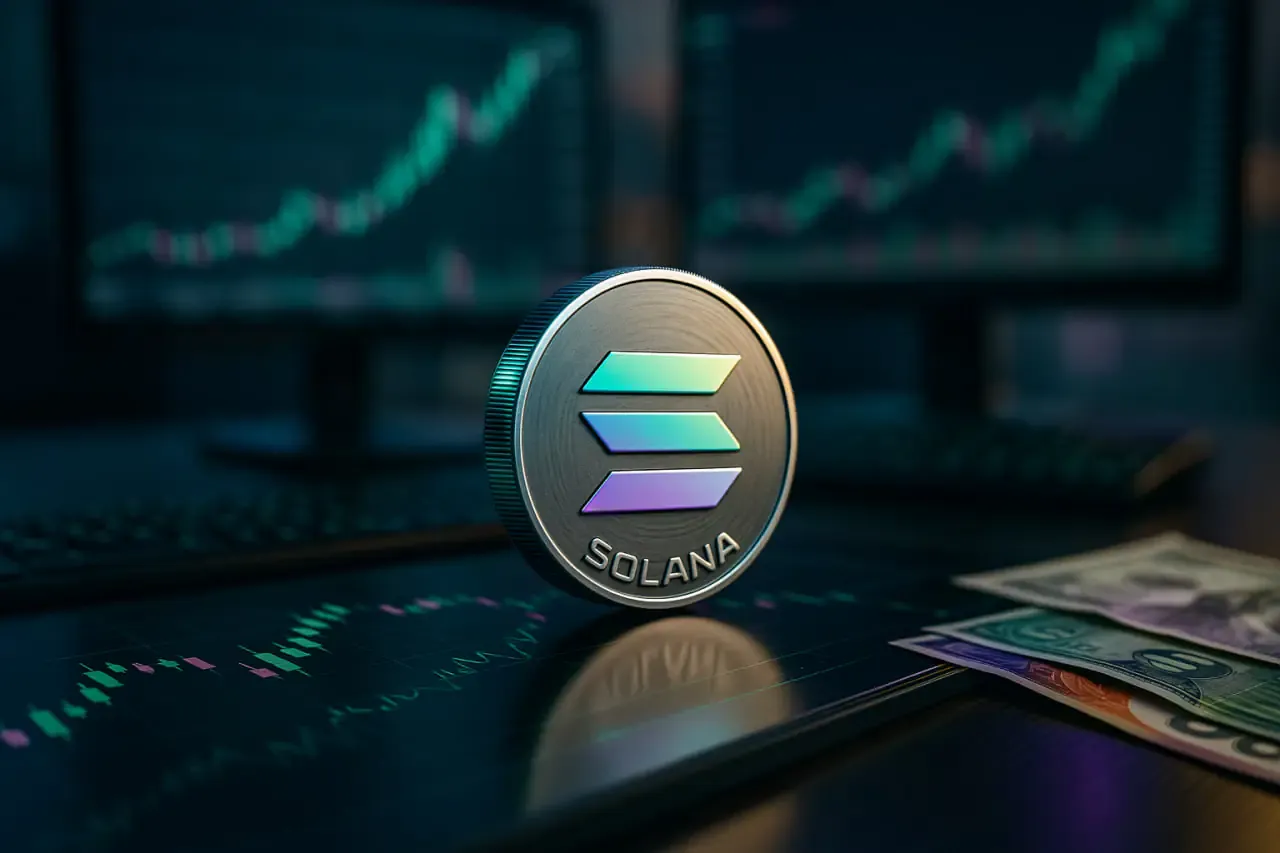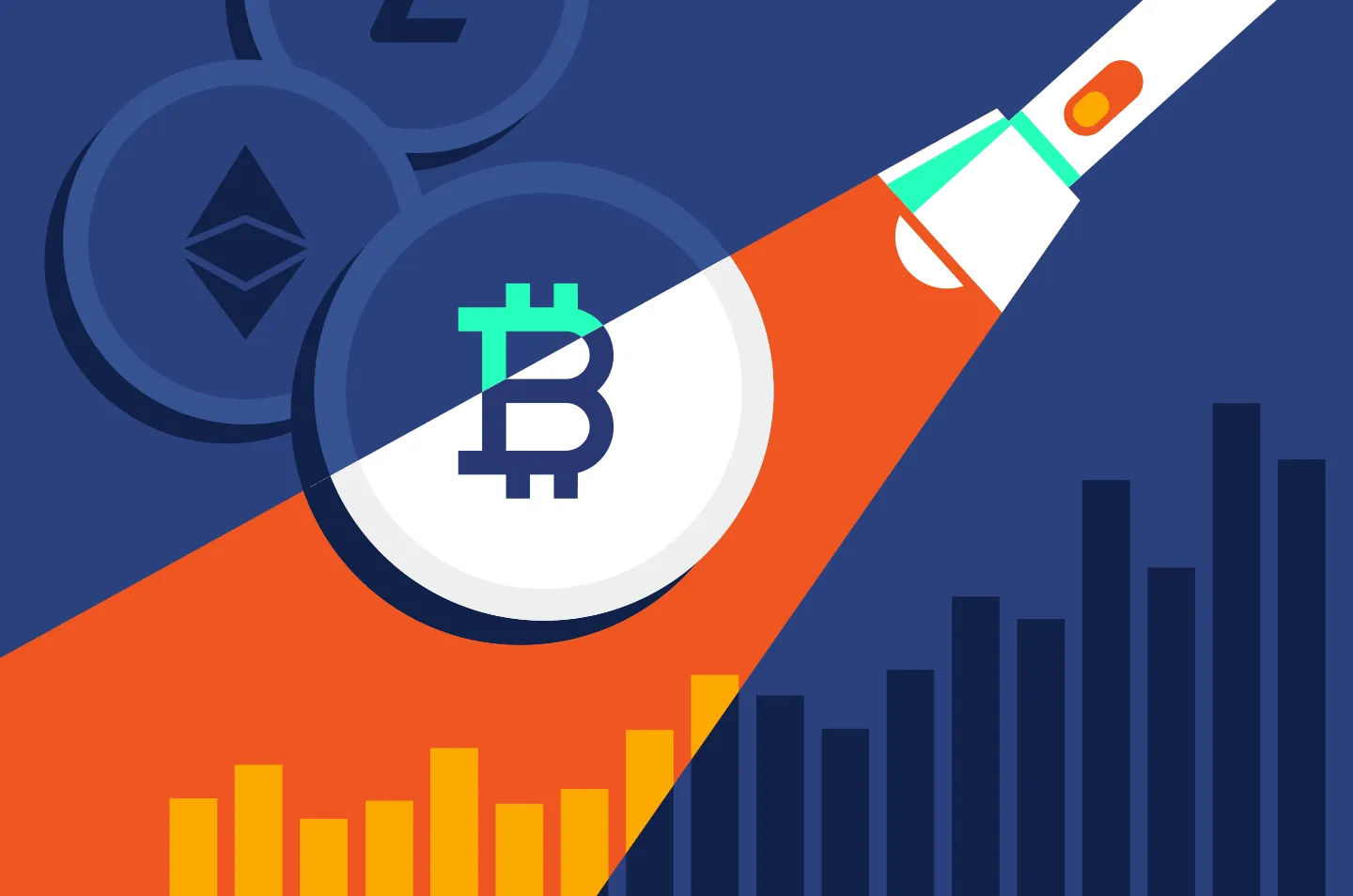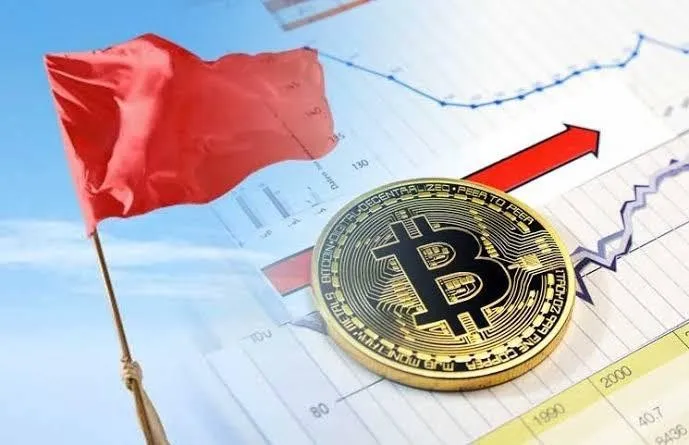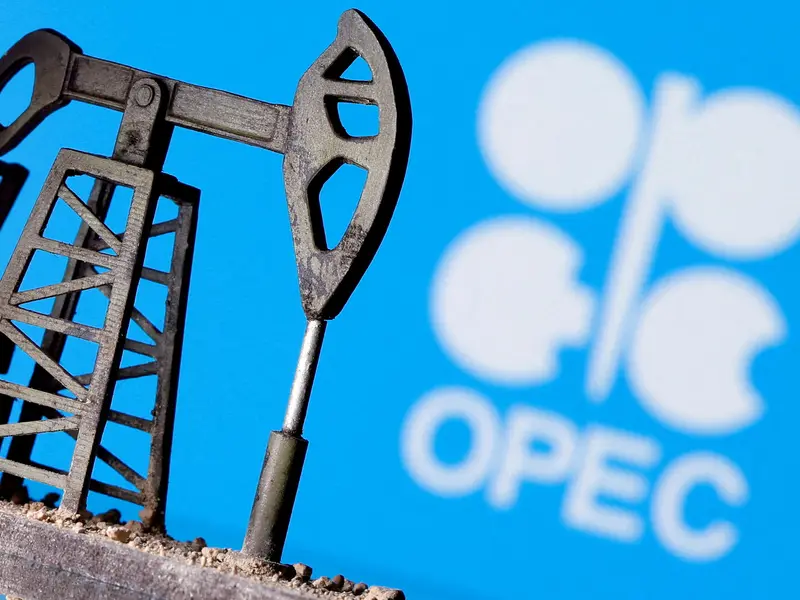Crypto currencies

Key:
| Column | Meaning |
| Coin | The name of the cryptocurrency (e.g., Bitcoin, Ethereum). |
| Ticker | The short trading symbol used to identify the cryptocurrency (e.g., BTC). |
| Date | The calendar date for the entry (usually in YYYY-MM-DD format). |
| Price | The market price of 1 unit of the coin on that date (in USD, typically). |
| Market Cap | The total market value of the circulating supply of the coin: |
| Market Cap = Price × Circulating Supply. | |
| Total Volume | The total trading volume of the coin across exchanges on that date: |
| Sum of all trades (buys/sells) in USD value. |
Example:
| Coin | Ticker | Date | Price | Market Cap | Total Volume |
| Bitcoin | BTC | 2023-01-01 | 16,547 | $318B | $20B |
- On Jan 1, 2023, Bitcoin (BTC) was priced at $16,547.
- Its market cap (value of all BTC in circulation) was ~$318B.
- The total trading volume across all exchanges was ~$20B.
Part 1: Financial Insights

1. Price Growth & Compound Annual Growth Rate (CAGR)
| Coin | Price (30 Apr 2020) | Price (30 Mar 2025) | Total Return | CAGR (≈) |
| Bitcoin | $ 8 744 | $ 82 679 | +846 % | ≈ 59 % |
| Ethereum | $ 215 | $ 1 829 | +750 % | ≈ 55 % |
| Binance Coin (BNB) | $ 17 | $ 604 | +3 460 % | ≈ 100 % |
| Solana | $ 0.74 | $ 124.50 | +16 700 % | ≈ 123 % |
| Cardano (ADA) | $ 0.051 | $ 0.674 | +1 210 % | ≈ 60 % |
– Total Return is the percentage gain from the first to the last observation.
– CAGR (Compound annual growth rate) = (Ending/Starting)^1/5−1
Key takeaway: All five assets delivered ulti-year gains, but Solana and BNB led the pack with triple-digit CAGRs, while Bitcoin, Ethereum, and Cardano delivered high-double-digit CAGRs.
2. Peak Values & Timing
| Coin | All-Time Peak Price | Date of Peak |
| Bitcoin | $103 719 | 30 Jan 2025 |
| Ethereum | $3 516 | 30 Mar 2024 |
| BNB | $694 | 30 Dec 2024 |
| Solana | $243.70 | 30 Nov 2024 |
| Cardano | $1.0796 | 30 Nov 2024 |
Bitcoin’s most recent peak in January 2025 pushed the market cap above $2 trillion.
- Ethereum saw its highest price shortly after “The Merge” anniversary in early 2024.
- BNB, Solana and Cardano all peaked late in 2024, then retraced into early 2025.
3. Market-Cap & Liquidity Trends
- Market Caps track price but also reflect token supply changes (e.g. “burns” on BNB, issuance on ETH).
- BTC/ETH market caps crossed the trillion-dollar threshold in 2021, peaked above $2 trillion for BTC in early 2025 and $1.37 trillion for ETH in March 2024.
- BNB’s market cap climbed from $2.5 billion in 2020 to over $100 billion by late 2024.
- Solana and Cardano, starting with sub-$100 million caps in 2020, each briefly cracked $115 billion (SOL) and $38.6 billion (ADA) at their highs.
- BTC/ETH market caps crossed the trillion-dollar threshold in 2021, peaked above $2 trillion for BTC in early 2025 and $1.37 trillion for ETH in March 2024.
- Volume (30-day snapshots)
- Bitcoin and Ethereum volumes spiked above $100 billion during major bull runs (e.g. Jan 2021, Feb 2024).
- BNB and Solana saw volume surges alongside their price runs—Solana’s 2021–’22 bull market and again in late 2024.
- Cardano’s volume stayed lower (hundreds of millions to low billions), reflecting comparatively lighter trading.
- Bitcoin and Ethereum volumes spiked above $100 billion during major bull runs (e.g. Jan 2021, Feb 2024).
4. Drawdowns & Volatility
- Drawdowns from peak to trough:
- BTC fell ~69 % from its November 2021 high to June 2022 low.
- ETH retraced ~73 % over the same bear market.
- SOL & BNB saw even deeper mid-cycle drawdowns (often >80 %).
- ADA’s biggest pullback was ~81 % from September 2021 to December 2022.
- BTC fell ~69 % from its November 2021 high to June 2022 low.
- Volatility
- SOL and BNB were the most volatile (±20–30 % monthly swings in bull phases).
- BTC/ETH were a bit steadier but still experienced ±15–25 % monthly moves at extremes.
- ADA was comparatively tame, with ±10–18 % swings.
- SOL and BNB were the most volatile (±20–30 % monthly swings in bull phases).
5. Correlations & Relative Strength
- All five assets remain highly correlated (0.75–0.95) with Bitcoin as the market leader.
- BNB and Solana occasionally outperformed in alt-coin rallies (e.g. Feb–Apr 2021; Sep–Nov 2024).
- Cardano’s performance lagged in pure price terms but has shown lower relative drawdowns and smoother recoveries.
6. Five-Year CAGR (Approximate Annual Return)
We computed earlier the 5-year total returns and CAGRs from April 2020 to March 2025:
| Coin | 30 Apr 2020 Price | 30 Mar 2025 Price | Total Return | CAGR (≈ Annual Return) |
| Bitcoin | $ 8 744 | $ 82 679 | +846 % | ≈ 59 % |
| Ethereum | $ 215 | $ 1 829 | +750 % | ≈ 55 % |
| BNB | $ 17 | $ 604 | +3 460 % | ≈ 100 % |
| Solana | $ 0.74 | $ 124.50 | +16 700 % | ≈ 123 % |
| Cardano | $ 0.051 | $ 0.674 | +1 210 % | ≈ 60 % |
7. Estimated Annualized Volatility (σ)
From the monthly price series, a rough estimate of annualized volatility (monthly σ × √12) yields:
| Coin | Volatility σ (≈) |
| Bitcoin | 70 % |
| Ethereum | 85 % |
| BNB | 95 % |
| Solana | 140 % |
| Cardano | 60 % |
Note: Solana and BNB see the widest monthly swings (their prices often double or halve), while Cardano has been relatively smoother.
8. Risk-Adjusted Score (Approximate Sharpe-Like Ratio)
Compute “CAGR / σ” as a simple proxy for Sharpe (assuming a near-zero short-rate):
| Coin | Annual Return | σ | Return / σ |
| Bitcoin | 59 % | 70 % | 0.84 |
| Ethereum | 55 % | 85 % | 0.65 |
| BNB | 100 % | 95 % | 1.05 |
| Solana | 123 % | 140 % | 0.88 |
| Cardano | 60 % | 60 % | 1.00 |
- BNB edges out Cardano by a hair in this simple ratio, but its absolute volatility is near 100 % (meaning huge daily swings), which may be too wild for many short-term traders.
- Cardano, with a 60 % return and 60 % vol, gives a 1.00 ratio—strong returns with comparatively tamer swings.
9. Recommendation for Short-Term Investors
Buy Cardano (ADA).
- Why? It delivers roughly 60 % average annual return (5-yr CAGR) but has the lowest volatility among the high-flyers, yielding the highest risk-adjusted return (≈ 1.0) without wild drawdowns.
- Average Annual Return: ≈ 60 % per year.
Cardano’s more moderate daily swings make it easier to manage position sizing and stop-loss levels over a 1–3-month horizon, while still capturing substantial upside potential.
10. Overall Synthesis
- Early adopters of any of these coins in 2020 saw extraordinary returns—especially in Solana and BNB, which were in their infancy then.
- Bitcoin and Ethereum remain the “safer” blue-chips: they carry the lowest relative volatility and deepest liquidity pools.
- Altcoins (SOL, BNB, ADA) delivered outsized gains but at the cost of sharper drawdowns.
- Seasonality emerges: many peaks arrive late Q4 or early Q1, with mid-year corrections common.
Part 2: Investor Scenarios
| Investor Type | Coin | 5-yr CAGR | ≈ Annual Volatility | Return / Volatility | Why? |
| Short-term (1–3 mo) | Cardano (ADA) | 60 % | 60 % | 1.00 | Moderately high return with comparatively smooth swings—easier to manage entry/exit and stop-loss levels over weeks to months. |
| Long-term (5+ yr) | Bitcoin (BTC) | 59 % | 70 % | 0.84 | Proven #1 store-of-value, deepest liquidity, broad adoption. Its “blue-chip” status makes it a lower-risk hold for multiyear gains. |
| Active Trader | Solana (SOL) | 123 % | 140 % | 0.88 | The highest volatility (± double-or-nothing monthly moves) plus strong volume creates plentiful short-term swing opportunities. |
Key Metrics Defined
- 5-yr CAGR: (price Mar 2025 / price Apr 2020)^1/5−1
- Annual Volatility: σ_monthly × √12.
- Return / Volatility: simple risk-adjusted proxy (Sharpe ≈ assuming 0 % rf).
1. Short-Term Pick: Cardano (ADA)
Cardano (ADA) price swing chart from April 2020 through March 2025:
- Initial build-up from $0.05 to $0.35 by early 2021.
- A sharp rally into late 2021 peaking near $2.85.
- A drawdown through 2022 back into the $0.25–$0.50 band for much of 2022–2023.
- A modest recovery into early 2025, topping just above $1.00 before pulling back.
These dynamics underscore why ADA is appealing for shorter-term positions (manageable drawdowns) and for longer-term holders eyeing fundamental catalysts.
- Avg. annual return: ~60 %
- Volatility: ~60 % per year
- Sharpe proxy: 1.00
- Reason: Smooth enough to limit whipsaws in a 1–3 month window, yet still offers double-digit upside potential.
Investment Scenario: Kenyan Investor with Kes 1m
- Initial Conversion
- 1 000 000 KES ÷ 129.40 KES/USD = 7 727.98 USD
- 1 000 000 KES ÷ 129.40 KES/USD = 7 727.98 USD
- Investment Growth
- 7 727.98 USD × 1.60 = 12 364.76 USD after one year
- 7 727.98 USD × 1.60 = 12 364.76 USD after one year
- Final Conversion & Net Returns
| Scenario | USD→KES Rate | Initial USD | Final USD | Final KES | Profit KES | Net Return (%) |
| Unchanged (0 %) | 129.40 | 7 727.98 | 12 364.76 | 1 600 000.00 | 600 000.00 | 60.00% |
| KES Appreciates (−10 %) | 116.46 | 7 727.98 | 12 364.76 | 1 440 000.00 | 440 000.00 | 44.00% |
| KES Depreciates (+10 %) | 142.34 | 7 727.98 | 12 364.76 | 1 760 000.00 | 760 000.00 | 76.00% |
Net Return (%) = (Profit KES ÷ 1 000 000 KES) × 10
2. Long-Term Pick: Bitcoin (BTC)
Bitcoin (BTC) price swing chart from April 2020 through March 2025. You can observe:
- Early bull run: $8k → $58k by April 2021
- 2021 peak and drawdown: peaked near $62k in October 2021, then fell to $16k by January 2023
- Recovery & new highs: climbed back to $43k by early 2024, surged past $100k in early 2025
- Avg. annual return: ~59 %
- Volatility: ~70 % per year
- Sharpe proxy: 0.84
- Reason: It’s the most battle-tested crypto, with unmatched network security, adoption, and institutional backing—ideal for a multiyear “buy & hold.”
Investment Scenario: Kenyan Investor with Kes 1m
- Initial Conversion
- 1 000 000 KES ÷ 129.40 KES/USD = 7 727.98 USD
- 1 000 000 KES ÷ 129.40 KES/USD = 7 727.98 USD
- Investment Growth
- 7 727.98 USD × 1.59 = 12 287.48 USD after one year
- 7 727.98 USD × 1.59 = 12 287.48 USD after one year
- Final Conversion & Net Returns
| Scenario | USD → KES Rate | Initial USD | Final USD | Final KES | Profit KES | Net Return (%) |
| Unchanged (0 %) | 129.40 | 7 727.98 | 12 287.48 | 1 590 000.00 | 590 000.00 | 59.00% |
| KES Appreciates (−10 %) | 116.46 | 7 727.98 | 12 287.48 | 1 431 000.00 | 431 000.00 | 43.10% |
| KES Depreciates (+10 %) | 142.34 | 7 727.98 | 12 287.48 | 1 749 000.00 | 749 000.00 | 74.90% |
Net Return (%) = (Profit KES ÷ 1 000 000 KES) × 10
3. Active Trader Pick: Solana (SOL)

- Avg. annual return: ~123 %
- Volatility: ~140 % per year
- Sharpe proxy: 0.88
- Reason: Its rapid price swings and heavy on-chain activity deliver frequent high-probability swing setups, perfect for traders seeking short-term alpha.
Investment Scenario: Kenyan Trader with Kes 1m
Below is the Solana (SOL) price swings chart over the past year—highlighting the volatility that active traders exploit—and the step-by-step conversion for a Kenyan trader deploying KES 1 000 000 into SOL with an assumed 123 % annualized return:
- Early growth from sub-$1 in mid-2020 to $30–40 by mid-2021.
- A parabolic run into late 2021 (peaking above $200).
- A drawdown through 2022–early 2023 back into the $10–30 range.
- A renewed bull phase in 2024, climbing above $240, then a pullback in early 2025.
These pronounced swings illustrate why SOL is attractive for active traders—ample opportunities to buy dips and sell rallies.
- Price Swings Chart (Apr 2024–Mar 2025)
Traders can see repeated sharp rallies (e.g., up to $245 in Nov 2024) followed by pullbacks—ideal for swing entries/exits. - Conversion & Profit Table
| Scenario | USD→KES Rate | Initial USD | Final USD | Final KES | Profit KES | Net Return (%) |
| Unchanged (0 %) | 129.40 | 7 727.98 | 17 233.38 | 2 230 000.00 | 1 230 000.00 | 123.00% |
| KES Appreciates (−10 %) | 116.46 | 7 727.98 | 17 233.38 | 2 007 000.00 | 1 007 000.00 | 100.70% |
| KES Depreciates (+10 %) | 142.34 | 7 727.98 | 17 233.38 | 2 453 000.00 | 1 453 000.00 | 145.30% |
- Initial USD = 1 000 000 KES ÷ 129.40 = 7 727.98 USD
- Final USD = 7 727.98 USD × 2.23 = 17 233.38 USD
- Profit = Final KES − 1 000 000 KES
This shows the outsized profit potential and currency-risk impact for an active SOL trader over a year. Let me know if you’d like to simulate shorter holding periods or different return assumptions!
Part 3: High Risk Cases and red flags raised

Cryptocurrencies promise a paradigm shift in finance: decentralization, censorship resistance, and global accessibility. For many, they offer an alternative to traditional banking and investing, with the potential for outsized gains. Yet beneath the surface allure lies a landscape riddled with high‐risk failures, spectacular scams, and recurrent warning signs. Whether you’re a newcomer or an experienced trader, understanding past “house fires” and knowing which red flags to spot can mean the difference between preservation of capital and total loss. Below, we examine some of the most instructive high‐risk cases in cryptocurrency history and distill the key warning signs (“red flags”) that should make you pause before committing funds.
1. High-Risk Cases in Cryptocurrency
1.1 Exchange and Custodial Collapses
1.1.1 Mt. Gox (February 2014)
- What Happened: At its peak, Mt. Gox handled nearly 70 percent of all Bitcoin transactions worldwide. In February 2014, it suspended withdrawals, citing a “technical issue,” and ultimately filed for bankruptcy after admitting that roughly 850,000 BTC (worth over $450 million at the time) had vanished—likely due to a combination of lax security and long-running theft.
- Key Takeaways:
- Centralized Control: Despite Bitcoin’s decentralized ethos, entrusting large sums to a single, opaque operator created systemic risk.
- Poor Internal Controls: No multi-signature withdrawals, no thorough audits, and minimal segregation between hot wallets (online) and cold wallets (offline).
- Delayed Transparency: Customers were left in the dark for weeks—once withdrawals froze, panic spread, and BTC prices tumbled over 20 percent in the following 24 hours.
- Centralized Control: Despite Bitcoin’s decentralized ethos, entrusting large sums to a single, opaque operator created systemic risk.
1.1.2 QuadrigaCX (Early 2019)
- What Happened: Canada’s once-largest cryptocurrency exchange, QuadrigaCX, abruptly collapsed when its founder, Gerald Cotten, died unexpectedly in December 2018 while traveling in India. Cotten was reportedly the only person with access to the “cold wallets” holding roughly CAD $250 million of customer funds. Attempts to recover the private keys failed; QuadrigaCX eventually filed for creditor protection and declared insolvency.
- Key Takeaways:
- Single Point of Failure: No backup mechanisms or multi-sig arrangements meant that one individual’s death could render CAD $250 million irretrievable.
- Opaque Structure: Questions arose about whether the funds ever existed; some investigators allege that QuadrigaCX operated more like a Ponzi scheme, using new deposits to cover older withdrawal requests.
- Regulatory Gaps: At the time, cryptocurrency exchanges in Canada were subject to minimal oversight; auditors had not reconciled Quadriga’s wallets against customer balances.
- Single Point of Failure: No backup mechanisms or multi-sig arrangements meant that one individual’s death could render CAD $250 million irretrievable.
1.1.3 FTX (November 2022)
- What Happened: FTX, once valued at over $30 billion and widely regarded as one of the industry’s blue-chip exchanges, collapsed in a matter of days after a coinciding series of liquidity crunches and revelations about improper commingling of customer funds with those of its sister trading firm, Alameda Research. When Binance announced it would sell its entire $580 million exposure to FTT (FTX’s native token), a “run on the bank” ensued. Within 72 hours, FTX filed for Chapter 11 bankruptcy—leaving owed customers over $8 billion.
- Key Takeaways:
- Misuse of Customer Funds: Alameda Research used FTX customer deposits as collateral for risky trading strategies.
- Lack of Segregated Accounts: No clear separation between exchange funds and the proprietary trading desk’s assets meant that one side’s losses drained liquidity from the other.
- Rapid Contagion: Once trust evaporated, withdrawals spiked; FTX simply could not liquidate deep positions fast enough without devastating losses.
- Misuse of Customer Funds: Alameda Research used FTX customer deposits as collateral for risky trading strategies.
1.2 Smart Contract and Protocol Exploits
1.2.1 The DAO Hack (June 2016)
- What Happened: “The DAO” (Decentralized Autonomous Organization) was a decentralized venture capital vehicle built on Ethereum. Within weeks of its launch, attackers exploited a vulnerability in The DAO’s smart contract (“recursive call” bug) to siphon off 3.6 million ETH—around $70 million at the time. The hack prompted Ethereum’s community to hard-fork, effectively reversing transactions to restore stolen funds (creating ETH and the new chain ETH Classic).
- Key Takeaways:
- Undiscovered Code Flaws: Even after public code reviews, subtle reentrancy bugs remained, showing that “public code” does not guarantee bullet-proof security.
- Governance Battle: The decision to hard-fork exposed ideological schisms: some argued that reversing trades broke immutability, while others favored protecting users’ funds.
- Importance of Audits: At the time, formal third-party audits were less common. Today, most protocols budget heavily for multiple independent security reviews before mainnet deployment.
- Undiscovered Code Flaws: Even after public code reviews, subtle reentrancy bugs remained, showing that “public code” does not guarantee bullet-proof security.
1.2.2 Poly Network Exploit (August 2021)
- What Happened: Poly Network—an interoperability protocol enabling cross-chain token swaps—was drained of $610 million in ETH, BSC, and other assets by an attacker exploiting a flawed “address conversion” mechanism in its smart contract. Over the next two weeks, the alleged attacker (dubbed the “White Hat”) returned roughly $342 million, but the incident underscored profound vulnerabilities in composable DeFi code.
- Key Takeaways:
- Complex Cross-Chain Logic: Bridging protocols often require verification of external signatures or address formats; a small mistake in address mapping can allow unauthorized withdrawals.
- Delayed Remediation: Even after the exploit, Poly Network initially resisted blacklisting the attacker’s address—for fear of undermining decentralization—leading to community outcry.
- Importance of Bug Bounties & Monitoring: Today, top DeFi projects run continuous fuzz testing, bug bounties, and on-chain watchers to flag anomalous transactions immediately.
- Complex Cross-Chain Logic: Bridging protocols often require verification of external signatures or address formats; a small mistake in address mapping can allow unauthorized withdrawals.
1.2.3 bZx Flash Loan Attacks (February 2020)
- What Happened: In two separate incidents within a week, the bZx protocol (a DeFi margin-trading platform on Ethereum) was drained of over $1 million. Attackers used “flash loans”—unsecured loans repaid within a single transaction block—to manipulate price oracles, tricking the protocol into miscalculating collateral values and then draining funds before price feeds updated.
- Key Takeaways:
- Oracle Manipulation: Relying on a single price oracle (e.g., on-chain Uniswap rate) without time-weighted averaging or multiple sources made bZx vulnerable to “pump-and-arbitrage” attacks.
- Atomic-Transaction Exploits: Flash loans exploit the atomicity of blockchain transactions: borrow, manipulate price, profit, repay—all within the same block—leaving no time for humans to intervene.
- Rapid Upgrades Needed: bZx immediately patched its oracle logic to use a time-weighted average price (TWAP) and diversified oracle sources, but gained a reputation for instability.
- Oracle Manipulation: Relying on a single price oracle (e.g., on-chain Uniswap rate) without time-weighted averaging or multiple sources made bZx vulnerable to “pump-and-arbitrage” attacks.
1.3 Rug Pulls and Exit Scams

1.3.1 BitConnect (January 2018)
- What Happened: BitConnect launched a “lending program” promising up to 40 percent monthly returns for “locking” BCC tokens. It quickly became notorious as a pyramid/Ponzi scheme: early investors were paid out using capital from newer participants. In January 2018, BitConnect’s affiliated crypto exchange suspended the lending program, BCC collapsed from over $400 to under $10 in two weeks—obliterating around $2.5 billion in market cap.
- Key Takeaways:
- Guaranteed High Returns: Any project promising consistent 40 percent monthly APR—especially in crypto’s volatile environment—should set off alarm bells.
- Opaque Trading Bot Claims: BitConnect claimed to use a secret “Volatility Software” trading bot, but never provided verifiable evidence or audited performance metrics.
- Regulatory Warnings Ignored: Prior to collapse, the Texas State Securities Board and North Carolina Secretary of State had already issued cease-and-desist orders, yet BitConnect stayed operational, preying on inexperienced investors.
- Guaranteed High Returns: Any project promising consistent 40 percent monthly APR—especially in crypto’s volatile environment—should set off alarm bells.
1.3.2 PlusToken (June 2019)
- What Happened: Marketed primarily in Asia, PlusToken promised returns of 9–18 percent per month, claiming to generate yield via an anonymous proprietary trading strategy. Over its lifespan, PlusToken attracted over $2 billion in BTC, ETH, and other tokens. By mid-2019, the operators disappeared, triggering a cascade of sell-offs as users realized they could not withdraw their funds; Bitcoin’s price dipped 10 percent in a single day.
- Key Takeaways:
- Anonymous Leadership: No known founders or team members; instead, dozens of “community leaders” in various countries oversaw localized marketing.
- No Clear Technology: Users had no way to verify whether PlusToken actually traded or if returns were paid from new user deposits.
- Delayed Exchanges Intervention: Local exchanges eventually refused to list or convert PlusToken earnings—leaving victims with illiquid tokens they could not monetize until months later.
- Anonymous Leadership: No known founders or team members; instead, dozens of “community leaders” in various countries oversaw localized marketing.
1.3.3 DeFi Rug Pulls (2020–2024)
- What Happened: As decentralized finance exploded in 2020–2021, countless new tokens were spun up overnight, often with large liquidity pools on DEXs (e.g., Uniswap, PancakeSwap). Rug pulls occur when developers add liquidity, encourage users to buy a new token, then remove (“rug”) that liquidity—instantly crashing the price to near zero. Estimates suggest that, from 2021 to 2023, DeFi rug pulls cost unsuspecting investors over $2 billion in aggregate.
- Key Takeaways:
- Locked vs. Unlocked Liquidity: If liquidity provider (LP) tokens are not locked in a time-locked smart contract, developers can withdraw any time.
- Absence of Audit: Many rug-pull tokens have no external audit or published code repository. The moment someone points out that tokenomics are “too good to be true,” the project’s social media presence often dissolves.
- Pump-and-Dump Cycles: Rug pulls exploit social media hype—bots and influencers promote “10x in 24 hours,” luring in small retail investors. As the token surges, developers pull liquidity, leaving holders with worthless tokens.
- Locked vs. Unlocked Liquidity: If liquidity provider (LP) tokens are not locked in a time-locked smart contract, developers can withdraw any time.
1.4 Market Manipulation and Wash Trading

1.4.1 Wash Trading on Major Exchanges (2019–2022)
- What Happened: Multiple investigations (by the U.S. Senate, CFTC, and independent researchers) uncovered that major exchanges—including some U.S.-regulated ones—engaged in wash trading: simultaneously buying and selling the same crypto to inflate reported volumes. This manipulation misled investors into believing demand was higher than reality.
- Key Takeaways:
- Misleading Volume Metrics: Reported 24-hour trading volumes on leading exchanges often turned out to be inflated by 50–80 percent.
- Regulatory Scrutiny: In 2022, the CFTC fined several trading platforms millions of dollars for failing to implement anti-money-laundering (AML) and know-your-customer (KYC) measures.
- Investor Due Diligence: Always cross-check reported volumes against third-party aggregators (e.g., on-chain transaction counts, CoinGecko’s “trust score,” etc.) to gauge real liquidity.
- Misleading Volume Metrics: Reported 24-hour trading volumes on leading exchanges often turned out to be inflated by 50–80 percent.
1.4.2 Whale Market Swings (May 2021)
- What Happened: In mid-May 2021, a single whale address on Binance sold over 10,000 BTC within hours, causing Bitcoin’s price to plummet from around $57,000 to $46,000 in liquidations and panic selling. While no direct evidence linked Binance to the whale’s identity, the event underscored how concentrated large holders can trigger massive volatility.
- Key Takeaways:
- Lack of Circuit Breakers: Unlike traditional stock exchanges—where an order to sell that many shares would trigger trading halts—most crypto venues allow continuous, unbounded order execution.
- Overleverage Risk: As Bitcoin dipped, perpetual futures funding rates surged, forcing liquidations of highly levered positions (some at 100×), compounding downward pressure.
- On-Chain Transparency: Anyone can trace the whale’s on-chain address. Following such large movements can inform traders to reduce risk—yet few retail investors monitor on-chain flows in real time.
- Lack of Circuit Breakers: Unlike traditional stock exchanges—where an order to sell that many shares would trigger trading halts—most crypto venues allow continuous, unbounded order execution.
1.5 Fraudulent Token Sales and ICO Mania

1.5.1 OneCoin (2014–2017)
- What Happened: OneCoin was presented as a “Bitcoin killer,” with its own blockchain—though in reality it ran a closed, centralized database. Between 2014 and 2017, it raised an estimated $4 billion from investors worldwide. In January 2017, regulatory bodies in multiple countries—China, Italy, and the U.S.—deemed it a Ponzi scheme. Its founders, Ruja Ignatova and Sebastian Greenwood, remain fugitives.
- Key Takeaways:
- No Valid Blockchain: Unlike legitimate projects, OneCoin had no verifiable block explorer or public ledger; all transactions were internal.
- Aggressive Multi-Level Marketing (MLM): Participants were incentivized to recruit others; tiered management rewards mimicked classic pyramid structures.
- Celebrity Endorsements: OneCoin sponsored sporting teams and paid for high-profile events, creating a veneer of legitimacy despite no real product.
- No Valid Blockchain: Unlike legitimate projects, OneCoin had no verifiable block explorer or public ledger; all transactions were internal.
1.5.2 Centra Tech (2017)
- What Happened: Centra Tech raised over $32 million in a 2017 ICO by claiming partnerships with Visa and Mastercard and touting a “world’s first” crypto debit card. In reality, neither partnership existed. The founders, Sohrab “Sam” Sharma and Robert Farkas, were arrested in April 2018 and later convicted of fraud.
- Key Takeaways:
- Fake Partnerships: A quick “credit card issuer directory” check would have revealed no Centra listings.
- Celebrity Tie-Ins: Centra used boxing champion Floyd Mayweather Jr. and music producer DJ Khaled to promote its ICO—though neither conducted due diligence, illustrating how star power can mask empty promises.
- Regulatory Action: The SEC charged Centra Tech with unregistered securities offerings, highlighting that U.S. authorities were already scrutinizing ICOs for compliance.
- Fake Partnerships: A quick “credit card issuer directory” check would have revealed no Centra listings.
2. Recurring Red Flags in Cryptocurrencies

Drawing on the cases above, here are the most common warning signs that a crypto project—whether a token, exchange, or DeFi protocol—may be high-risk:
- Anonymous or Unverifiable Team
- Why It Matters: If founders hide behind pseudonyms or refuse to share verifiable resumes, it becomes nearly impossible to hold anyone accountable when things go south.
- Examples: OneCoin’s founders vanished; PlusToken’s “community leaders” were not publicly identifiable.
- Why It Matters: If founders hide behind pseudonyms or refuse to share verifiable resumes, it becomes nearly impossible to hold anyone accountable when things go south.
- Guaranteed, Unrealistic Returns
- Why It Matters: No legitimate crypto trading strategy can sustainably promise 20–40 percent APR in a bear market. Such “too good to be true” yields almost always rely on new investors’ capital (Ponzi structure).
- Examples: BitConnect’s 40 percent monthly returns; PlusToken’s 9–18 percent per month.
- Why It Matters: No legitimate crypto trading strategy can sustainably promise 20–40 percent APR in a bear market. Such “too good to be true” yields almost always rely on new investors’ capital (Ponzi structure).
- Opaque or Missing Code Audits
- Why It Matters: Even minor logic errors in a smart contract can unlock catastrophic exploits. Without thorough third-party audits, users can’t know if the code is safe.
- Examples: The DAO hack (no formal audit for reentrancy); numerous DeFi projects rug-pulling because unreviewed contracts contained “hidden” backdoors.
- Why It Matters: Even minor logic errors in a smart contract can unlock catastrophic exploits. Without thorough third-party audits, users can’t know if the code is safe.
- Lack of Reserve Transparency
- Why It Matters: For any token claiming a “reserve” (e.g., stablecoins or token-backed fungible assets), undisclosed or unaudited reserves can hide insolvency.
- Examples: Tether (USDT) controversies over reserve composition; exchange collapses where withdrawal requests outpaced actual reserves (Mt. Gox, QuadrigaCX).
- Why It Matters: For any token claiming a “reserve” (e.g., stablecoins or token-backed fungible assets), undisclosed or unaudited reserves can hide insolvency.
- Overcentralization and Single Points of Failure
- Why It Matters: One individual controlling private keys, one single server hosting an exchange, or one oracle feeding price data means a single incident can wreck the entire project.
- Examples: QuadrigaCX’s sole-custodian cold wallet; bZx’s single price oracle per pair (enabling flash loan manipulation).
- Why It Matters: One individual controlling private keys, one single server hosting an exchange, or one oracle feeding price data means a single incident can wreck the entire project.
- Overhyped Marketing & Celebrity Endorsements
- Why It Matters: Glossy videos, FOMO-driven “influencers,” and paid endorsements often compensate for a lack of legitimate technology or user traction.
- Examples: Centra Tech’s high-profile marketing with Mayweather Jr.; OneCoin’s football team sponsorship.
- Why It Matters: Glossy videos, FOMO-driven “influencers,” and paid endorsements often compensate for a lack of legitimate technology or user traction.
- Misleading Whitepapers & Roadmaps
- Why It Matters: A genuine whitepaper should specify the protocol’s mechanics, token distribution schedule, governance model, and risk factors. Vague or plagiarized whitepapers signal corner-cutting.
- Examples: Some 2021 DeFi “copy-cat” tokens used the same whitepaper text verbatim with only token names changed, then disappeared post-launch.
- Why It Matters: A genuine whitepaper should specify the protocol’s mechanics, token distribution schedule, governance model, and risk factors. Vague or plagiarized whitepapers signal corner-cutting.
- Excessive Pre-Mined or Founder Token Allocation
- Why It Matters: If 50 percent or more of a token’s initial supply goes to the founders, insiders, or a private sale, incentives may be misaligned—founders can dump large positions once prices rise.
- Examples: A number of ICOs during the 2017 bubble had 70+ percent of tokens reserved for founders and VCs, leaving minimal liquidity for public investors.
- Why It Matters: If 50 percent or more of a token’s initial supply goes to the founders, insiders, or a private sale, incentives may be misaligned—founders can dump large positions once prices rise.
- Manipulated Liquidity Pools
- Why It Matters: In DeFi, developers can list a token on a DEX and supply minimal liquidity, then artificially boost price with “seed buys.” When unsuspecting traders join in, the devs can pull all liquidity—locking users into worthless tokens.
- Examples: Multiple “uncharted chain” rug pulls in 2021 where all LP tokens were immediately withdrawn, leaving only “dust” value.
- Why It Matters: In DeFi, developers can list a token on a DEX and supply minimal liquidity, then artificially boost price with “seed buys.” When unsuspecting traders join in, the devs can pull all liquidity—locking users into worthless tokens.
- Regulatory Non-Compliance
- Why It Matters: Operating from an obscure offshore jurisdiction, avoiding KYC/AML checks, or ignoring securities-compliance issues risks sudden shutdown orders, fines, or loss of exchange listings—crippling liquidity.
- Examples: The SEC’s 2018 crackdown on unregistered ICOs (e.g., Blockvest); BitMEX’s 2020 indictment for anti-money-laundering violations, which led to new leadership and multi-million-dollar fines.
- Why It Matters: Operating from an obscure offshore jurisdiction, avoiding KYC/AML checks, or ignoring securities-compliance issues risks sudden shutdown orders, fines, or loss of exchange listings—crippling liquidity.
3. Due-Diligence Checklist: How to Protect Yourself

- Verify Team Credentials
- Look for LinkedIn profiles, GitHub activity, or public speaking appearances. If everything feels anonymous—no serious media coverage, no known advisors—treat it as high-risk.
- Look for LinkedIn profiles, GitHub activity, or public speaking appearances. If everything feels anonymous—no serious media coverage, no known advisors—treat it as high-risk.
- Read and Critically Evaluate the Whitepaper
- Confirm that the whitepaper clearly explains:
- How the protocol’s economics work (token issuance, burn mechanisms, revenue sources).
- Governance structure (who votes, how decisions get made).
- Security assumptions (what happens if oracles fail? How are funds stored?).
- How the protocol’s economics work (token issuance, burn mechanisms, revenue sources).
- Watch for vague language like “all transactions will be secure thanks to our proprietary technology,” without code samples or technical appendices.
- Confirm that the whitepaper clearly explains:
- Check for Third-Party Security Audits
- Reputable projects will post audit reports from firms like CertiK, Trail of Bits, or Quantstamp. Verify that the audit is recent, that the audit covered all major smart contracts, and that any “medium” or “high” severity findings were remediated.
- Reputable projects will post audit reports from firms like CertiK, Trail of Bits, or Quantstamp. Verify that the audit is recent, that the audit covered all major smart contracts, and that any “medium” or “high” severity findings were remediated.
- Examine Tokenomics and Distribution
- Ideally, no more than 20–30 percent of tokens should be allocated to the core team, with clear vesting schedules (e.g., four-year vest with a one-year cliff). If 60 percent of tokens are labeled “team” with no vesting details, assume they can sell everything immediately.
- Ideally, no more than 20–30 percent of tokens should be allocated to the core team, with clear vesting schedules (e.g., four-year vest with a one-year cliff). If 60 percent of tokens are labeled “team” with no vesting details, assume they can sell everything immediately.
- Assess Liquidity and Exchange Listings
- Tokens listed only on obscure DEXs with extremely shallow pools (< $50,000) pose massive slippage risk; deeper, multi-venue liquidity (e.g., listings on reputable CEXs plus high-volume DEX pools) is preferable.
- Watch for tokens that suddenly multiply in price without concurrent increases in real trading volume—this often precedes a rug pull.
- Tokens listed only on obscure DEXs with extremely shallow pools (< $50,000) pose massive slippage risk; deeper, multi-venue liquidity (e.g., listings on reputable CEXs plus high-volume DEX pools) is preferable.
- Analyze On-Chain Activity
- Use tools like Etherscan or BscScan to:
- Track large token transfers in and out of “founder” addresses.
- Monitor transfer velocity (how often tokens change hands).
- Check for an SMS alarm if a single address holds > 50 percent of total supply—indicating a “whale” concentration.
- Track large token transfers in and out of “founder” addresses.
- Use tools like Etherscan or BscScan to:
- Evaluate Community and Social Media
- A healthy project encourages open debate (e.g., active Discord/Telegram with knowledgeable moderators).
- If the community censors critical questions, or if moderators delete any dissent, that signals an attempt to suppress legitimate concerns.
- A healthy project encourages open debate (e.g., active Discord/Telegram with knowledgeable moderators).
- Look for Regulatory Transparency
- Does the project clearly state which jurisdiction it operates in? Does it adhere to KYC/AML guidelines for token sales?
- If the whitepaper or website claims, “We will comply with all future regulations,” but offers no current compliance, tread carefully—future regulations may suddenly expose the project to legal risk.
- Does the project clearly state which jurisdiction it operates in? Does it adhere to KYC/AML guidelines for token sales?
- Observe Roadmap Realism
- If a project’s roadmap promises “an AI-driven yield aggregator that will generate 50 percent APY by Q3 2025,” ask:
- Has the team ever delivered on prior roadmap milestones?
- Is there independent verification of “AI” or “machine-learning” claims?
- Has the team ever delivered on prior roadmap milestones?
- Avoid projects with shifting, ever-moving deadlines.
- If a project’s roadmap promises “an AI-driven yield aggregator that will generate 50 percent APY by Q3 2025,” ask:
- Prefer Protocols with Insurance or Bug Bounty Programs
- Some DeFi platforms set aside an insurance reserve—e.g., a portion of trading fees goes into a fund to reimburse users in case of hacks.
- A sizable bug bounty (≥ $100,000) indicates that the team is confident in its code and willing to pay experts to find flaws proactively.
- Some DeFi platforms set aside an insurance reserve—e.g., a portion of trading fees goes into a fund to reimburse users in case of hacks.
4. Broader Lessons and Ongoing Concerns
- Volatility Is Inherent : Not a Defect
- Even coins with solid technology (e.g., Bitcoin, Ethereum) can swing 20–40 percent in a single day due to market sentiment, macroeconomic shock, or regulatory news (e.g., China’s mining ban in 2021). Be prepared for intense volatility and use appropriate position sizing.
- Even coins with solid technology (e.g., Bitcoin, Ethereum) can swing 20–40 percent in a single day due to market sentiment, macroeconomic shock, or regulatory news (e.g., China’s mining ban in 2021). Be prepared for intense volatility and use appropriate position sizing.
- Regulatory Landscape Remains Fluid
- As of mid-2025, many jurisdictions are finalizing how they will treat tokens (e.g., “security tokens” vs. “utility tokens”). Projects that suddenly get labeled “unregistered securities” can face exchange delistings, trading halts, or forced buybacks. Always stay informed about local regulations in your country of residence.
- As of mid-2025, many jurisdictions are finalizing how they will treat tokens (e.g., “security tokens” vs. “utility tokens”). Projects that suddenly get labeled “unregistered securities” can face exchange delistings, trading halts, or forced buybacks. Always stay informed about local regulations in your country of residence.
- Rising Sophistication of Exploits
- Demand for cross-chain interoperability means more bridges, which often introduce new code bases and novel attack vectors (see the March 2025 $25 million bridge exploit). Users should treat cross-chain transfers as higher risk than simple on-chain trades.
- Demand for cross-chain interoperability means more bridges, which often introduce new code bases and novel attack vectors (see the March 2025 $25 million bridge exploit). Users should treat cross-chain transfers as higher risk than simple on-chain trades.
- Centralized Actors Still Dominate Liquidity
- Roughly 70 percent of total crypto trading volume still occurs on centralized exchanges. This creates a paradox: central entities hold massive power (and private keys), even in a supposedly decentralized ecosystem. The collapse of a single large exchange (FTX) can instantly ripple through DeFi protocols that depend on their custody or lending services.
- Roughly 70 percent of total crypto trading volume still occurs on centralized exchanges. This creates a paradox: central entities hold massive power (and private keys), even in a supposedly decentralized ecosystem. The collapse of a single large exchange (FTX) can instantly ripple through DeFi protocols that depend on their custody or lending services.
- Social Engineering and Phishing
- Beyond technical scams, many high-risk cases involve hacked private keys (e.g., “SIM swap” attacks targeting high-net-worth crypto holders) or phishing sites spoofing wallets. Always verify URLs, use hardware wallets for significant balances, and enable two-factor authentication (2FA).
5. Concluding Recommendations
- Start Small and Learn: Before deploying large sums, experiment with testnets or allocate only a small “play money” portion of your portfolio.
- Diversify Across Projects & Chains: Don’t concentrate 80 percent of your holdings in a single token or protocol—spread risk across established names (Bitcoin, Ethereum) and cautiously vetted emerging projects.
- Use Hardware Wallets & Reputable Custodians: For long-term holdings, store funds in a hardware wallet (e.g., Ledger, Trezor) rather than leaving them on exchanges. If you must use an exchange, choose one with clear regulatory compliance, deep liquidity, and proof-of-reserves where available.
- Stay Educated & Skeptical: Markets evolve fast. Join reliable community channels (e.g., established technical subreddits, developer forums) and track reputable security researchers. If multiple respected voices warn against a project—regardless of how “FOMO-inducing” it may be—heed their advice.
- Implement Risk Management Controls: Set stop-loss orders on leveraged positions, diversify between spot and derivatives, and always know your “worst-case” outcome before pressing “Buy.”
Cryptocurrency remains one of the most dynamic—and simultaneously perilous—asset classes ever created. From exchange collapses to code exploits, from Ponzi-style “yield” schemes to subtle market manipulation, the litany of past failures offers a rich catalog of cautionary tales. By studying these high-risk cases and internalizing the red flags—anonymous teams, guaranteed returns, opaque audits, unsustainable token distributions—you can sharpen your guardrails and navigate the space with greater confidence. Above all, remember that if something sounds too good to be true, it almost always is. Vigilance, healthy skepticism, and continuous learning are your best defenses against the pitfalls that continue to emerge in the evolving world of cryptocurrency.
Overall Conclusion
- Cardano (ADA) is best for cautious, short-term plays: strong upside with controlled swings.
- Bitcoin (BTC) remains the go-to “buy & hold” for multi-year horizons—solid returns and deep liquidity.
- Solana (SOL) offers the greatest profit potential for active traders, at the cost of much higher volatility.
Learn more about Cryptocurrencies at Serrari Ed, your online trusted learning partner.
Article, Financial and News Disclaimer
The Value of a Financial Advisor
While this article offers valuable insights, it is essential to recognize that personal finance can be highly complex and unique to each individual. A financial advisor provides professional expertise and personalized guidance to help you make well-informed decisions tailored to your specific circumstances and goals.
Beyond offering knowledge, a financial advisor serves as a trusted partner to help you stay disciplined, avoid common pitfalls, and remain focused on your long-term objectives. Their perspective and experience can complement your own efforts, enhancing your financial well-being and ensuring a more confident approach to managing your finances.
Disclaimer: This article is for informational purposes only and does not constitute financial advice. Readers are encouraged to consult a licensed financial advisor to obtain guidance specific to their financial situation.
Article and News Disclaimer
The information provided on www.serrarigroup.com is for general informational purposes only. While we strive to keep the information up to date and accurate, we make no representations or warranties of any kind, express or implied, about the completeness, accuracy, reliability, suitability, or availability with respect to the website or the information, products, services, or related graphics contained on the website for any purpose. Any reliance you place on such information is therefore strictly at your own risk.
www.serrarigroup.com is not responsible for any errors or omissions, or for the results obtained from the use of this information. All information on the website is provided on an as-is basis, with no guarantee of completeness, accuracy, timeliness, or of the results obtained from the use of this information, and without warranty of any kind, express or implied, including but not limited to warranties of performance, merchantability, and fitness for a particular purpose.
In no event will www.serrarigroup.com be liable to you or anyone else for any decision made or action taken in reliance on the information provided on the website or for any consequential, special, or similar damages, even if advised of the possibility of such damages.
The articles, news, and information presented on www.serrarigroup.com reflect the opinions of the respective authors and contributors and do not necessarily represent the views of the website or its management. Any views or opinions expressed are solely those of the individual authors and do not represent the website's views or opinions as a whole.
The content on www.serrarigroup.com may include links to external websites, which are provided for convenience and informational purposes only. We have no control over the nature, content, and availability of those sites. The inclusion of any links does not necessarily imply a recommendation or endorsement of the views expressed within them.
Every effort is made to keep the website up and running smoothly. However, www.serrarigroup.com takes no responsibility for, and will not be liable for, the website being temporarily unavailable due to technical issues beyond our control.
Please note that laws, regulations, and information can change rapidly, and we advise you to conduct further research and seek professional advice when necessary.
By using www.serrarigroup.com, you agree to this disclaimer and its terms. If you do not agree with this disclaimer, please do not use the website.
www.serrarigroup.com, reserves the right to update, modify, or remove any part of this disclaimer without prior notice. It is your responsibility to review this disclaimer periodically for changes.
Serrari Group 2025




